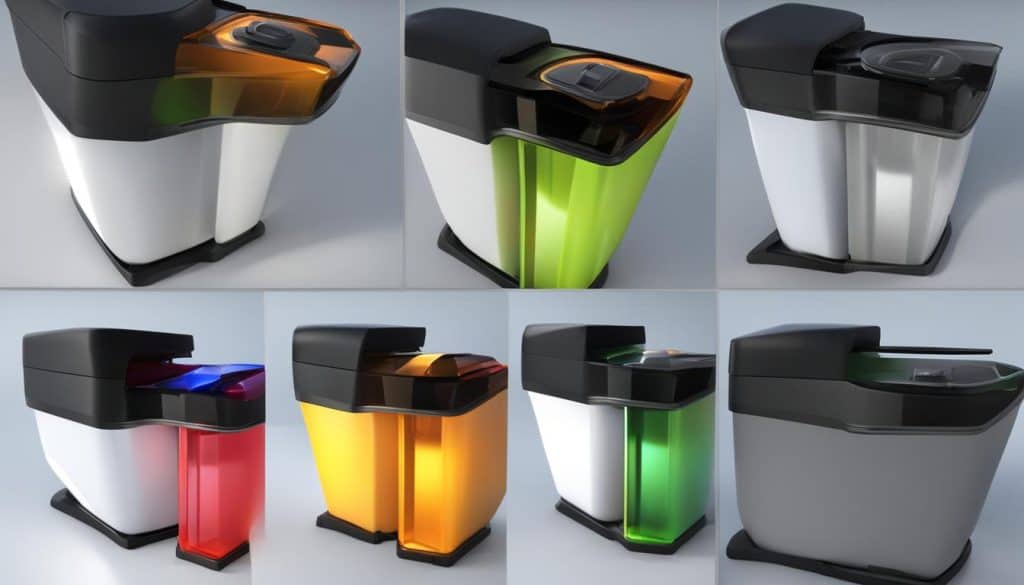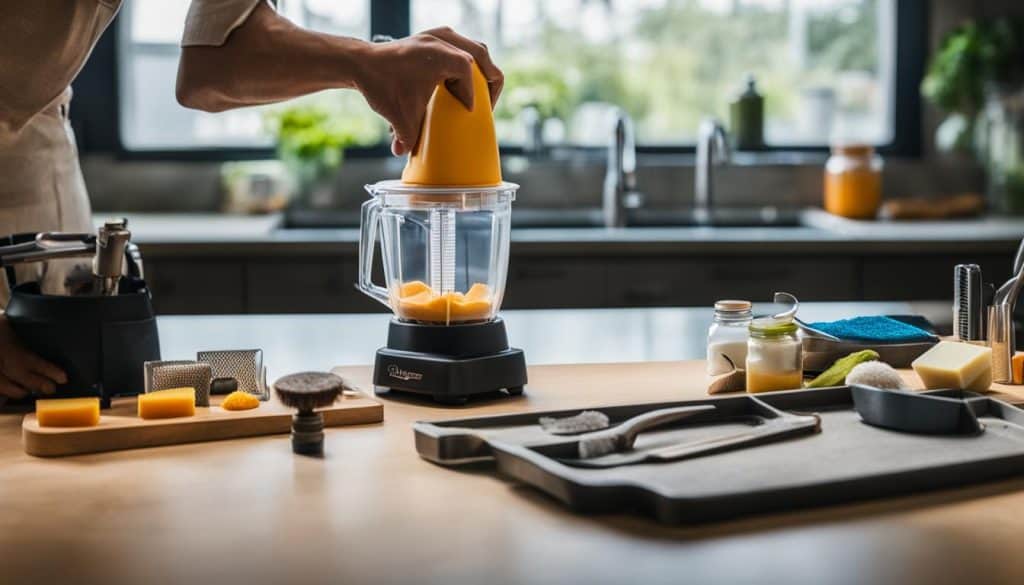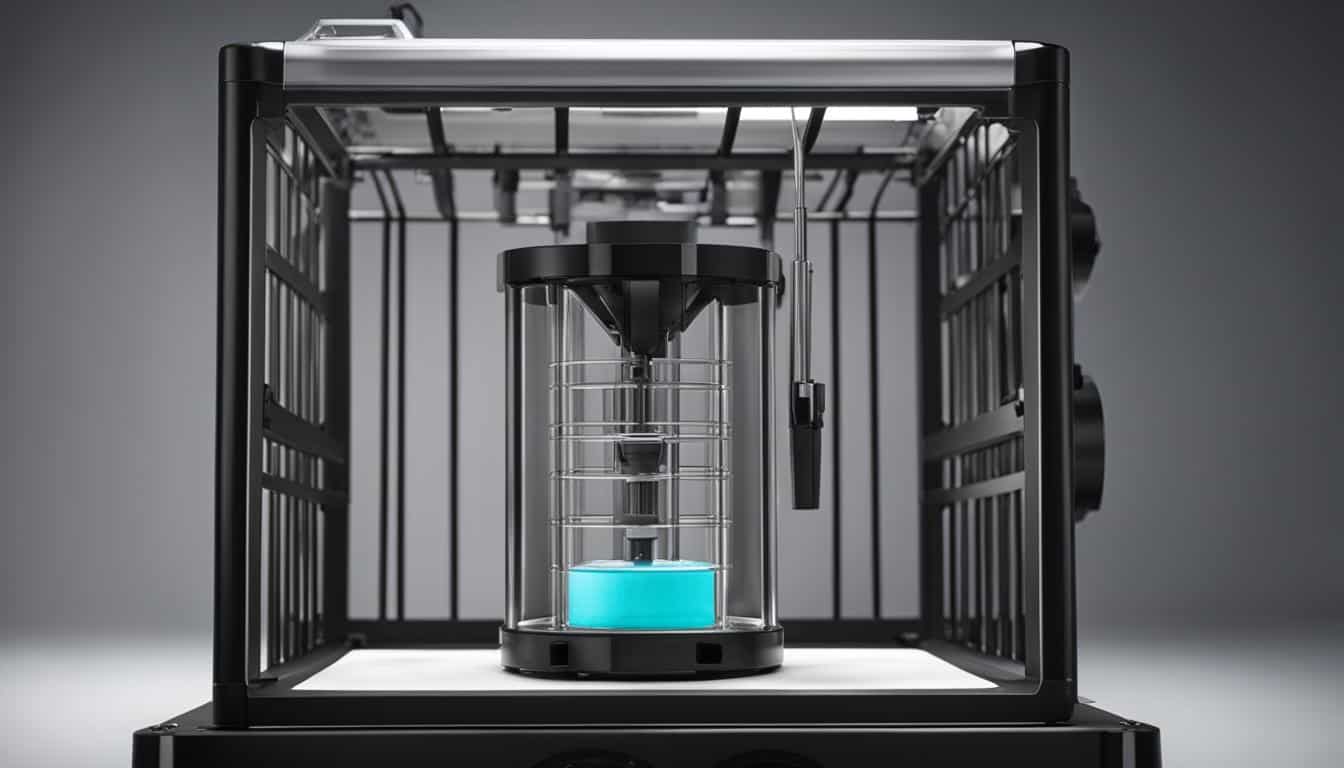Blenders are essential kitchen appliances that save time and effort when it comes to food preparation. Whether you’re making smoothies, pureeing soups, or grinding nuts, a blender is a versatile and convenient tool.
However, it is important to prioritize safety when using a blender to prevent accidents and injuries.
This article will introduce you to the key things to know about blender safety features, including automatic shut-off, lid locks, and overload protection. By following these safety guidelines, you can enjoy worry-free blending and avoid potential hazards.
1. Why Automatic Shut-Off is Important for Blender Safety
Have you ever left your blender running for too long? Automatic shut-off is an essential safety feature that prevents blender overheating, motor overload, or prolonged operation without ingredients.
This safety measure helps prevent potential damage to your blender motor and reduces the risk of fires or electrical hazards, ensuring safe and efficient blending.
Some blenders come with timer-based shut-off options for specific recipe blending times. It’s a great feature if you’re multitasking and want to avoid returning to an overheating blender.
With this feature, you can be sure that your blender will stop working as soon as it detects any of the potential hazards mentioned. This makes the automatic shut-off feature an important aspect to consider when purchasing new blenders.
Keep in mind that some lower-quality or older blenders may not come equipped with automatic shut-off safety features. For this reason, ensure that the blender you buy has this feature, particularly if you plan on using it frequently or blending large quantities.
What can happen without automatic shut-off?
Blenders are an essential kitchen gadget, and they are generally considered safe to use, but without automatic shut-off, they can become dangerous.
Without this feature, your blender can overheat, damaging the motor or even catching fire. If the blender blades get blocked, it can cause motor overload and pose a serious risk to safety.
It is crucial to understand the importance of this safety feature not just for the longevity of your blender but also for your well-being while using it.
2. The Importance of Lid Locks for Safe Blending
When it comes to blender safety, lid locks are a critical feature to consider. These locks keep the blender from starting or continuing to operate unless the lid is securely fastened.
This important feature ensures that ingredients will stay inside the jar while blending, preventing spills, splatters, and even projectiles in case something goes wrong. Always look for blenders with lid locks that are sturdy and have clear indicators to confirm proper closure.
Avoid the hassle of cleaning up spills or risking injury by using blenders with secure lid locks. Not only does this feature keep your surroundings clean and safe, but it also prevents food wastage and helps ensure consistent blending results.
Lid Lock FAQs
| Question | Answer |
|---|---|
| What is a lid lock? | A lid lock is a safety feature that prevents a blender from operating unless the lid is securely fastened. |
| Why is a lid lock important? | A lid lock prevents spills, splatters, or projectiles from occurring while blending, keeping you and your surroundings safe and clean. |
| How do I know if the lid is properly locked? | Most blenders have a clear indicator on the lid or the base that shows if the lid is locked in place. Check your blender’s manual for specific instructions. |

“A lid lock is a simple but powerful feature that can make a huge difference in safety and convenience when it comes to blender usage.” – Jane Smith, Home Cook
- Always make sure to properly position the lid on the jar to ensure the lid lock engages properly.
- If the blender doesn’t start or suddenly stops during operation, check to make sure the lid is properly secured.
- Never attempt to use the blender with the lid off or partially open. This can cause serious accidents or damage the blender.
By selecting a blender with a sturdy lid lock, following proper usage guidelines, and adhering to maintenance and inspection practices, you can ensure a safer and more efficient blending experience.
3. Understanding the Benefits of Overload Protection
When it comes to blender safety, overload protection is a must-have feature. This safety mechanism is triggered when the blender’s motor is overworked due to excessive ingredients, blocked blades, or improper use.
The blender’s power may be reduced, pulsed, or shut off automatically to prevent any damage to the motor. This feature protects the blender’s motor from burning out and extends its lifespan.
It’s important to pay attention to the blender’s capacity limitations and avoid overloading it with ingredients. Overloading not only prevents the blender from functioning properly, but it can also result in safety hazards.
Check out the table below for a quick overview of the advantages of overload protection:
| Advantages of Overload Protection |
|---|
| Prevents motor burnout and extends blender’s lifespan |
| Reduces potential safety hazards |
| Ensures proper functioning of the blender |
By understanding the benefits of overload protection, you can confidently use your blender without worrying about safety concerns. Remember to always read the manufacturer’s instructions and follow proper usage guidelines to ensure safe and optimal performance.
4. Bonus Safety Tips for Blender Usage
Along with the specific safety features, you should keep in mind some additional tips to use your blender safely. These tips will not only protect you but also help extend the blender’s lifespan.
Always Unplug the Blender for Cleaning and Disassembling
Before you start cleaning or disassembling the blender, always remember to unplug it. This ensures that you don’t accidentally turn it on and cause an injury.

Avoid Reaching into the Jar While the Blender is Running
It may be tempting to reach inside the jar while the blender is running to adjust the ingredients, but this is not safe. The blades move at high speed, and you risk injuring your hand or fingers. Instead, pause the blender, remove the lid, and use a spatula to move the ingredients around.
Use the Tamper Tool Provided by the Manufacturer
When blending thick mixtures like nut butter or frozen fruit, you may need to use a tamper tool to push down the ingredients.
Most blender manufacturers provide a tamper tool that fits perfectly into the jar and allows you to blend safely and effectively. Use the tool instead of reaching into the jar with a spoon or other utensil.
Exercise Caution When Blending Hot Liquids
Blending hot liquids can be dangerous and lead to splatters and spills. Follow the manufacturer’s instructions for blending hot liquids and allow the mixture to cool slightly before blending. Start by blending at a low speed, gradually increasing the speed, and hold the lid firmly in place.
Regularly Clean and Maintain Your Blender
To ensure optimal performance and safety, it’s essential to clean and maintain your blender regularly. After each use, clean the jar, blades, and any detachable parts. Inspect the power cord for any signs of damage or fraying.
Also, check the buttons and control panel to ensure they are working correctly. Regular maintenance and inspection will help prolong the blender’s life and minimize any safety risks.
5. Proper Usage Guidelines for Blenders
Using a blender is a simple and effective way to prepare your favorite foods and drinks. However, to ensure safety, it’s important to follow proper usage guidelines. Here are some tips to keep in mind:
- Familiarize yourself with the manufacturer’s instructions: Every blender comes with a set of instructions from the manufacturer. It’s important to read and understand these before using your blender. Pay attention to recommended blending times, ingredient limitations, and any warnings related to certain types of ingredients or hot liquids.
- Use the blender as intended: It might be tempting to try new techniques or use the blender in ways it’s not intended for. However, this can be dangerous. Stick to the recommended use and avoid overloading the blender with excessive ingredients or prolonged blending times.
- Keep the blender clean: Regularly clean the blender jar, blades, and any removable parts after each use. This helps ensure optimal performance and prevents buildup of harmful bacteria.
- Exercise caution when blending hot liquids: Blending hot liquids can be dangerous as steam buildup can cause the lid to pop off. Follow the manufacturer’s instructions and use the blender’s pulse setting instead of continuous blending. Also, allow the liquid to cool for a few minutes before blending.
To summarize, following proper usage guidelines will help you use your blender safely and effectively.

6. Selecting a Safe Blender for Your Needs
When it comes to selecting a blender, safety features should be a top priority. Be sure to look for blenders with automatic shut-off, lid locks, and overload protection to keep you and your loved ones safe during operation.
It’s essential to consider the construction of the blender. A sturdy and well-built blender is less likely to malfunction or tip over, minimizing the risk of accidents.
Research different blender brands and models to get an idea of the safety record and reliability of the blender you are considering. Reading user reviews can provide valuable insights into experiences with specific blender models.
Comparing Blenders for Safety Features
| Blender Model | Automatic Shut-Off | Lid Locks | Overload Protection | Construction |
|---|---|---|---|---|
| Vitamix 5200 | Yes | Yes | Yes | Sturdy and durable |
| Ninja Professional Blender | Yes | Yes | Yes | Plastic parts may wear down over time |
| Blendtec Total Classic Original Blender | Yes | Yes | Yes | Sturdy and durable |
| Oster Blender Pro 1200 | Yes | Yes | Yes | Designed for durability |
Table: Comparison of the top-rated blender models with an emphasis on their safety features and construction quality.
By comparing different blender models, you can make an informed decision about which blender is the best fit for your needs. Remember, prioritizing safety features, sturdy construction, and reliable brands can ensure safe and enjoyable blending experiences.
7. Maintaining and Inspecting Your Blender for Safety
Regularly maintaining and inspecting your blender is essential for safety and optimal performance. Neglecting these tasks can lead to malfunction, damage, or even accidents. Here are some tips to keep your blender in top shape:
- After each use, clean the blender jar, blades, and any detachable parts. Use warm water, mild detergent, and a soft sponge. Avoid using abrasive cleaners, rough materials, or submerging the base or power cord in water.
- Inspect the power cord for any signs of damage or fraying. Damaged cords can cause electrical malfunctions, short circuits, or shock hazards. If you notice any damage, contact the manufacturer for assistance.
- Ensure that the buttons and control panel are in good working condition. Check for any loose or stuck buttons, malfunctioning displays, or unusual noises. If you notice any irregularities, unplug the blender and contact the manufacturer for assistance.
By following these maintenance and inspection guidelines, you can ensure that your blender is safe, functional, and efficient.

Conclusion: Prioritizing Safety in Blender Usage
Prioritizing safety when using a blender is crucial for preventing accidents and ensuring a positive blending experience.
The key safety features such as automatic shut-off, lid locks, and overload protection, along with proper usage and maintenance, will help you enjoy safe and worry-free blending. By following these guidelines, you can confidently use your blender while minimizing risks.
To ensure blender safety, always remember to prioritize safety features when selecting a blender. Look for blenders with automatic shut-off, lid locks, and overload protection. Familiarize yourself with the manufacturer’s instructions and any specific safety precautions they provide.
Regularly maintaining and inspecting your blender can also help ensure optimal performance and safety. Make sure to clean the blender jar, blades, and any detachable parts after each use, and inspect the power cord for any signs of damage or fraying.
In conclusion, safe blending begins with prioritizing blender safety, understanding the key safety features, following proper usage guidelines, and regularly maintaining and inspecting your blender. By doing so, you can confidently and safely use your blender to create delicious and nutritious blends.


